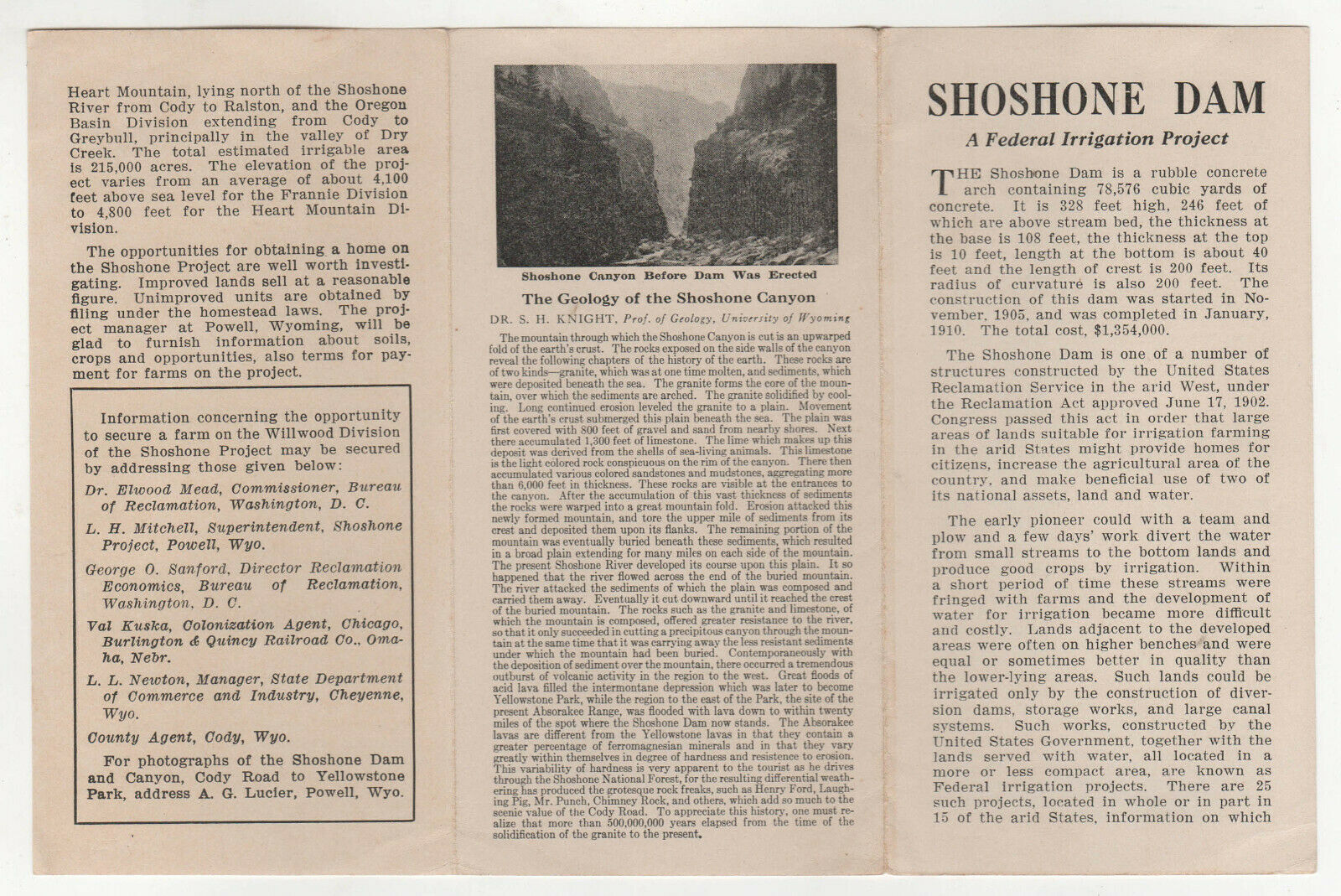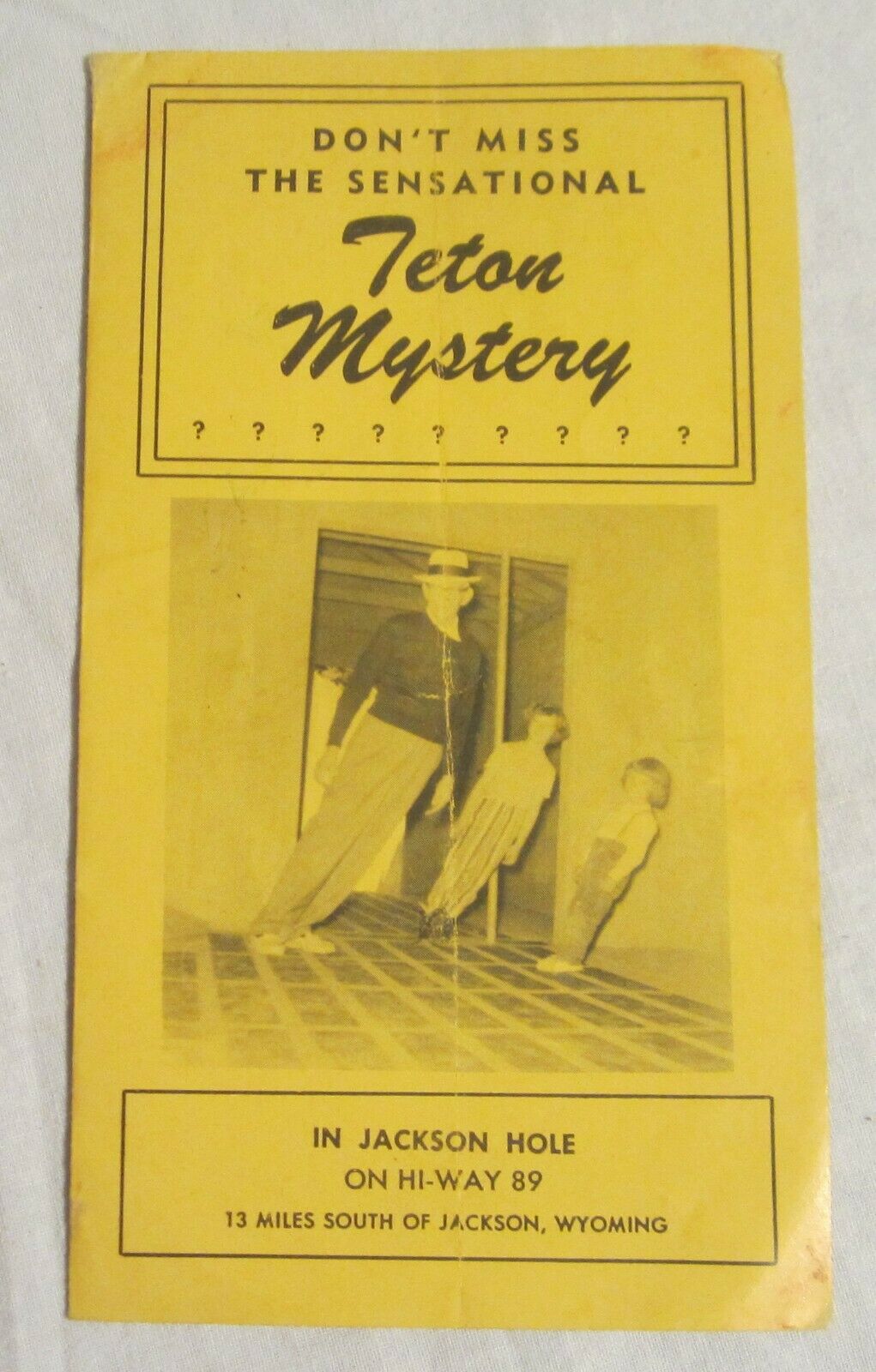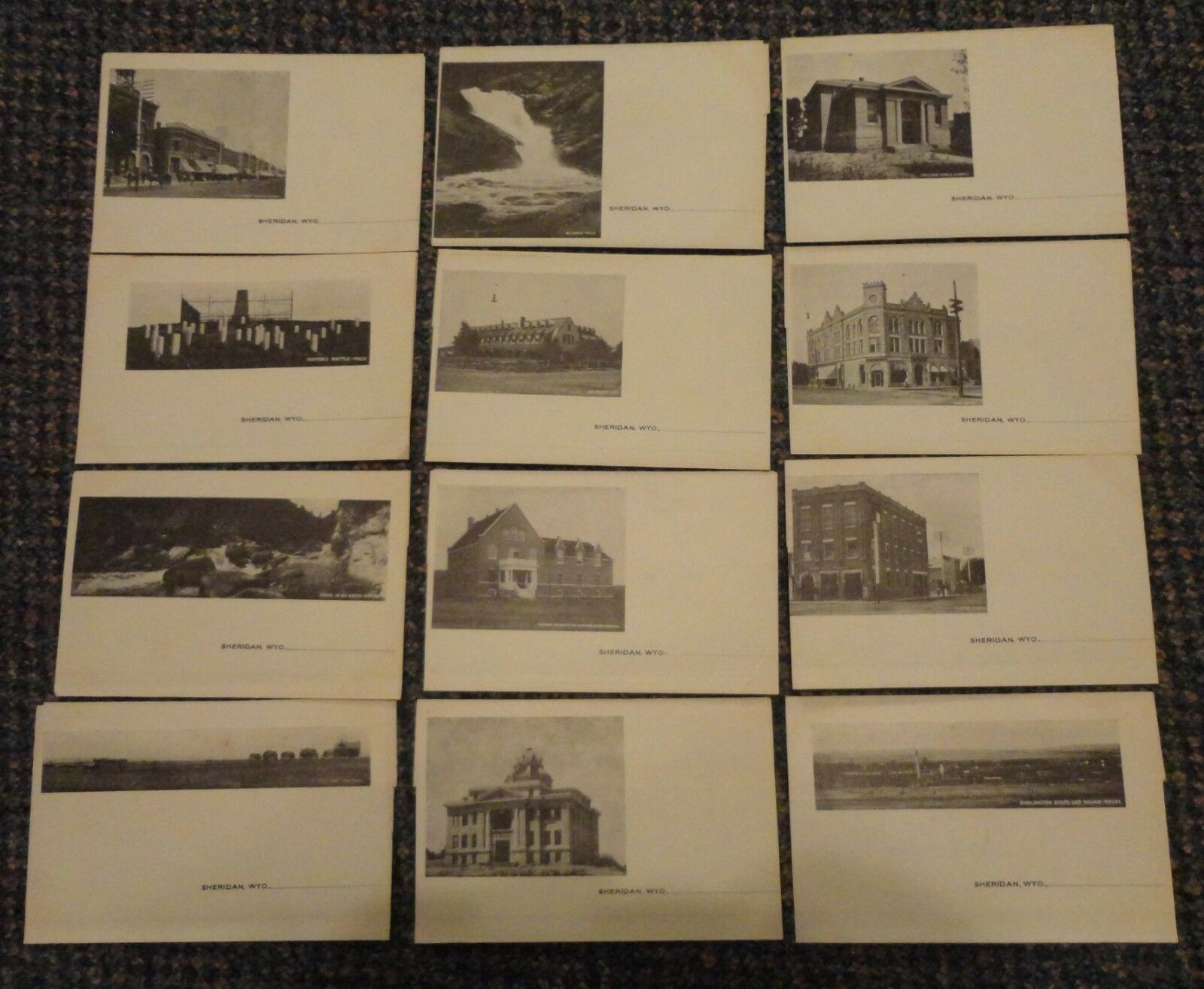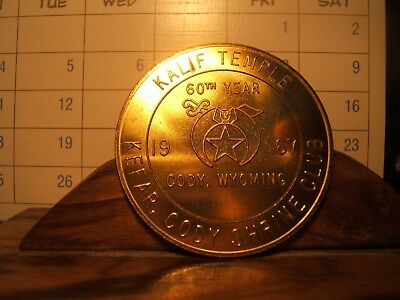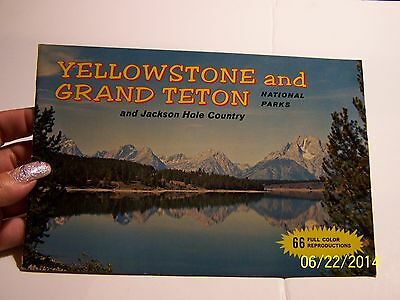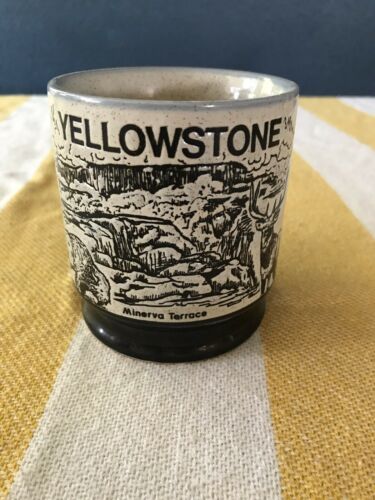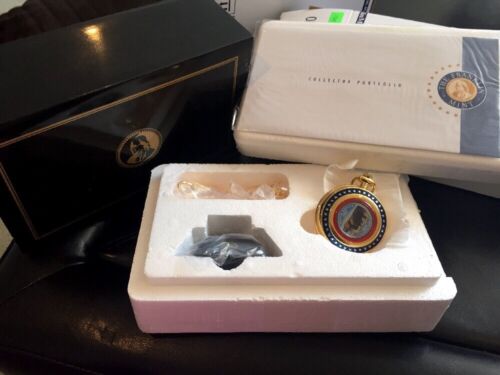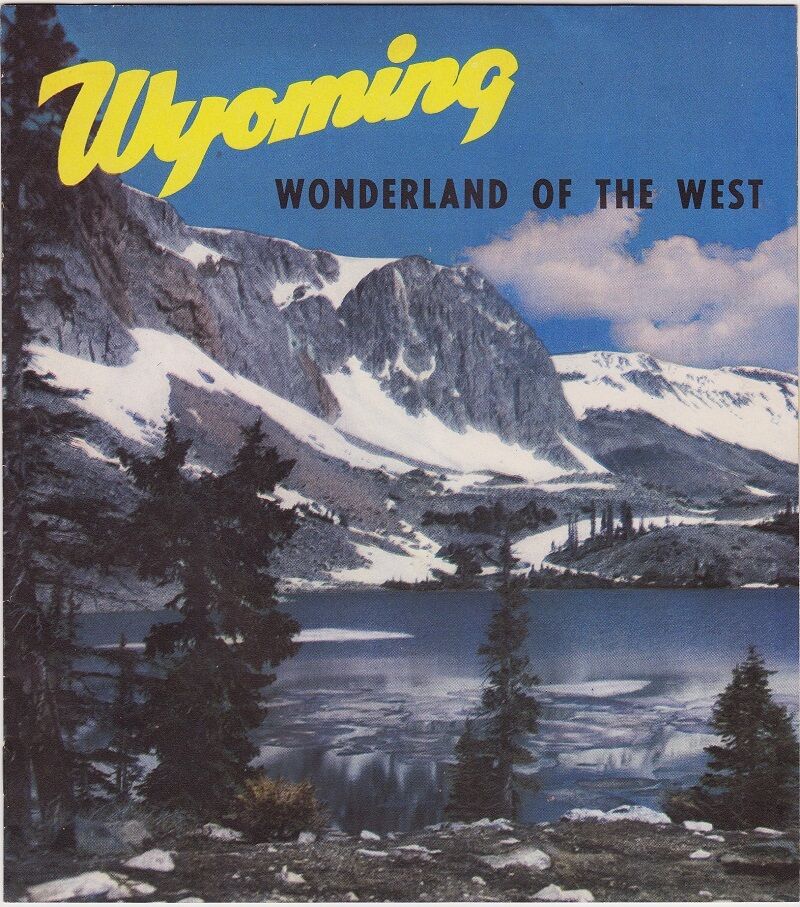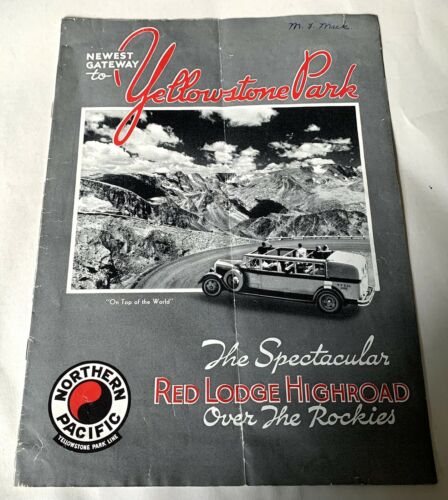-40%
1930s SHOSHONE DAM Wyoming BROCHURE Federal Irrigation Project BUFFALO BILL Cody
$ 8.97
- Description
- Size Guide
Description
SHOSHONE DAM BROCHUREFREE SHIPPING with delivery confirmation on all domestic purchases!
Six-panel brochure, "Shoshone Dam; A Federal Irrigation Project" - c.1930s
We ship worldwide! Please see all pictures and visit
our eBay store and other eBay auctions!
Buffalo Bill Dam is a concrete arch-gravity dam on the Shoshone River in the U.S. state of Wyoming. It is named after the famous Wild West figure William "Buffalo Bill" Cody, who founded the nearby town of Cody and owned much of the land now covered by the reservoir formed by its construction. The dam is part of the Shoshone Project, successor to several visionary schemes promoted by Cody to irrigate the Bighorn Basin and turn it from a semi-arid sagebrush-covered plain to productive agricultural land.[3] Known at the time of its construction as Shoshone Dam, it was renamed in 1946 to honor Cody.[4]
The 325 feet (99 m) high structure was designed by engineer Daniel Webster Cole[5] and built between 1905 and 1910. At the time of its completion it was the tallest dam in the world.[3] It was listed on the National Register of Historic Places in 1971[1] and named a National Civil Engineering Landmark by the American Society of Civil Engineers in 1973.[6] The land around the reservoir is maintained as Buffalo Bill State Park.
The dam is a concrete arch-gravity dam, 70 feet (21 m) wide at the base and 200 feet (61 m) wide at the crest, with an original height of 325 feet (99 m). The concrete structure measures 108 feet (33 m) deep at the base, tapering to 10 feet (3.0 m) at the crest, with a volume of 82,900 cubic yards (63,400 m3) of concrete.[7] It is anchored into Pre-Cambrian granitic rock on either side. The spillway is an uncontrolled overflow weir on the south side, 298 feet (91 m) wide, dropping through a tunnel in the left abutment.[4]
Construction
Downstream face of Buffalo Bill Dam looking north, with the old right abutment outlet works below and to the right of the visitor center
With the authorization of the Shoshone Project in 1904, Buffalo Bill Dam became one of the earliest projects of the new Bureau of Reclamation. The ambitious project involved the construction of one of the first high concrete dams in the United States. Work began immediately, with drilling for geologic investigation starting in July 1904 and continuing for ten months. Work proceeded concurrently on the construction of an access road up the narrow canyon from Cody. The chosen contractor, Prendergast & Clarkson of Chicago, started work in September 1905, building a camp for workers and starting on a diversion dam, which was to divert the river into a wooden flume, through a tunnel and out through another flume to rejoin the river bed. Two men were killed in the construction of the tunnel. A June 1906 flood destroyed the flume. The delay caused the Bureau of Reclamation to suspend the contractor's contract and to call upon the contractor's bonding company, the U.S. Fidelity and Guaranty Company, to ensure the completion of the work. Little work was done until March 1907. Another flood in July damaged the diversion dam again. Working conditions were harsh, leading to the first strike in Wyoming's history in November, in which workers demanded and received three dollars a day from USF&G.[4]
USF&G delegated responsibility for the work to two new contractors, Locher and Grant Smith and Company, in March 1908. Work progressed more quickly, with the first concrete pours in April. Spring floods set the project back once again, causing concrete work to be suspended. Concrete work started again in March 1909, and despite more spring flooding that suspended work from July to September, work moved quickly. Another threatened strike was broken when Italian laborers were replaced with Bulgarian workers. Final concrete was poured in January 1910, with a final cost of .4 million. Seven construction workers were killed on the project.[4]
Immediately after completion the dam suffered from leakage through the outlet works, leading to low water elevations that exposed mudflats, which soon produced dense blowing dust. Corrective work to valves took until 1915. Problems with the right abutment's outlet works led to their abandonment in 1959. They were sealed in 1961. The reservoir began to lose capacity immediately as a result of the Shoshone's heavy silt load, and the material deposited at the head of the reservoir continued to blow when the reservoir was drawn down. Work continued on silt dikes and reforestation into the 1950s, but capacity is reduced from the reservoir's nominal capacity of 869,230 acre feet (1.07218 km3) to 623,557 acre feet (0.769146 km3) due to siltation.[4]
The new reservoir covered hot springs at the forks of the Shoshone, similar to those found at Colter's Hell at the mouth of the Shoshone Canyon.[8]
Shoshone Power Plant
Right abutment outlet works with seepage on canyon walls
Work on the Shoshone Power Plant started in 1920. The power plant is located 600 feet (180 m) downstream from the dam on the north side of the canyon. Following delays for spring flooding, work on the power house and supply tunnel was complete in 1922, ready for the installation of electrical equipment.[4] Generating units 1 and 2 came on line in 1922, with Unit 3 in 1931. Installed capacity was 6.012 MW. All three units were shut down in 1980, worn out from fifty years of service. 1 and 2 were decommissioned and left in place, while 3 was replaced with a new 3 MW Francis turbine unit that started operation in 1992. The plant operates with a head of 220 feet (67 m).[9]
Shoshone Canyon Tunnel and Heart Mountain Power Plant
The proposed Heart Mountain Canal project, intended to irrigate lands to the north of the river, required a new tunnel to direct irrigation waters to a suitable elevation for distribution. Work on the 2.8-mile (4.5 km) Shoshone Canyon Tunnel started in 1937, accompanied by the death of two tunnel workers who were overcome by fumes from explosives and hydrogen sulfide from nearby geothermal activity, and were subsequently struck by construction equipment. A natural cave had to be crossed by a concrete flume of two 70 feet (21 m) spans, constructed under difficult conditions in a high-gas environment. Work on the tunnel by the Utah Construction Company was complete in 1939. The Heart Mountain Powerplant was built at the tunnel's outlet in 1947 as a temporary facility. It was rebuilt concurrently with the dam heightening project and is operated on a seasonal basis. It operates a 5 MW Francis turbine on a 265-foot (81 m) head.[4][10]
Renovation and height increase
Upstream face showing the added height of the dam
Starting in 1985, the crest of the dam was raised 25 feet (7.6 m), increasing the reservoir's capacity by 260,000 acre feet (0.32 km3) when the project was completed in 1993. The spillways were enlarged and equipped with radial arm gates. The project also included a visitor center, located at the north end of the dam's crest. The additional height allowed 25.5 MW of additional generating capacity to be added to the project.[11] The expanded reservoir inundated facilities at[12] Buffalo Bill State Park, requiring their relocation and reconstruction.
Buffalo Bill Power Plant
The Buffalo Bill Powerplant was built concurrently with the work to increase the dam's height in 1992. The plant, located in Shoshone Canyon downstream from the original Shoshone Powerplant, operates three Francis turbines with generators rated at 6 MW each on a head of 266 feet (81 m).[13]
Spirit Mountain Power Plant
Downstream face of the dam, showing the new 25-foot section on top of the original dam
The Spirit Mountain Powerplant receives pressurized water through a conduit. It primarily functions to dissipate the pressure in the conduit before it enters an open canal, generating power as a byproduct. The unit operates a Francis turbine generating 4.5 MW on a seasonal base load basis, with a 110-foot (34 m) head. It was built in 1994.[14]
See also
iconWater portal iconRenewable energy portal
Pathfinder Dam, a similar and contemporary dam in Wyoming, built of stone masonry due to its distance from concrete supplies
List of largest reservoirs of Wyoming
_______________________________________________________________
Why Buy From Chestnut Hill Books?
Chestnut Hill Books has a perfect 100% feedback rating dating over 18 years and spanning 20,000+ transactions, with customers in all 50 states and over 100 countries on 6 continents. Our detailed seller ratings (item as described, communication, shipping time and shipping and handling charges) are among the best on eBay. All domestic purchases come with free shipping and complimentary delivery confirmation, trackable through
the United States Post Office.
Thank you for looking at our items!
Payment:
Payment is due within 7 days of purchase. Contact us
for special payment requests/options. If payment cannot be produced within the 7 day period, please send a message immediately indicating when payment should be expected, otherwise an unpaid item dispute will be filed with eBay.
Where Do We Ship?
Chestnut Hill Books ships to every country in the world at reasonable rates as suggested by the United States Postal Service.
Please contact us for a specific international shipping quote before bidding should you have any questions.
Shipping Terms:
If payment is made immediately, your item will usually be mailed within 24 hours of payment receipt.
All items are securely packed to ensure safe shipping. Postcards are mailed between sturdy cardboard. All domestic shipments come with complimentary delivery confirmation, trackable through
the USPS
. Buyers will receive an e-mail from PayPal with tracking information and related links; please refer to this e-mail before contacting us with questions on the status of your package, as we will have as much delivery information as you. Zero profit is made on international shipping & handling charges; domestic shipping is free.
Return Policy:
We strive to describe each item completely and accurately. However, if you feel an item was not described correctly, the item can be returned at our expense within 30 days of receipt for a refund of your original payment. It is requested that you contact us immediately
should you have any question about the condition or representation of your item.
Who Are We?
Chestnut Hill Books is a family-owned antiques business based out of the SouthCoast, Massachusetts. We collect historical items related to New Bedford, Massachusetts and the surrounding area (Dartmouth, Fairhaven, Westport etc), Boston College (tickets, programs, pennants, postcards, scrapbooks, pinbacks, sports & non-sports etc), Massachusetts political buttons & memorabilia and Mount Monadnock in Jaffrey, New Hampshire. Please contact us if you have any collectibles in those categories.
Other:
Please do not hesitate to contact us with any other questions/comments. We normally respond to all inquiries in a timely manner. Also, please do not forget to leave positive feedback upon item receipt! Thank you for looking at our listings!
_______________________________________________________________
